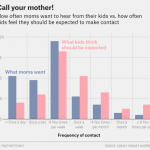Before I launch into the link round-up, I’d love it if you could do me two mitzvot. About.com is taking nominations for best atheist blog, and, as I explained yesterday, I’d love for my weird, crossover, argumentative blog to be included if you care to vote.
Also yesterday, I posted a strange time-travelling thought experiment to nail down some intuitions about epistemology. I’d love it if you comment with your reactions before I discuss mine. Merci!
The Superbowl hasn’t aired yet, but copyranter already identified the best ad.
Though I won’t be watching because I really strongly disapprove of football.
Football’s head-to-head collisions can cause serious concussions. Although players may not suffer immediate harm — not all concussions result in a loss of consciousness, and some pass unnoticed unless players are tested with brain scans — the damage may cause serious mental degeneration later in life… Upon autopsy, the brains of NFL players and boxers (who suffer similar rates of concussion) look like those of elderly patients with advanced dementia or Alzheimer’s.
Much of the fault for this epidemic of concussion-induced dementia lies with the NFL, which is tasked with protecting its players, but some measure of blame falls on football fans who watched the body-shaking collisions and did not wonder about the possible toll on players. Sports fans endorse lax regulation with every championship ticket they buy, every jersey they wear and every game they watch.
Too often, we ignore the ways our media consumption habits make us culpable for harmful trends. The steroid scandal in baseball is being driven by a competitive arms race among teams, but also by the increasing focus on sluggers and home run records, rather than the game as a whole. Fans who cheered players who were clearly juicing are being disingenuous when they express shock and horror when doping is proven.
Our outrage at the steroid scandal exposes our own hypocrisy when it comes to the health of players. Steroid users are criticized for cheating, but we also claim that the list of harmful side effects from steroid use is what makes these athletes poor role models for children. Why should we treat “artificially” induced harm as intrinsically more dangerous or despicable than the “all-natural” consequences of their sports? Excellence in athletics frequently puts pressure on athletes to take unnecessary chances with their bodies. If we cheer for these sports, we cannot absolve ourselves of moral culpability when athletes come to harm.
I promise not to make every post in these quick takes depressing, but this is beautiful as well as sad (and I rarely get the opportunity to praise Nixon). io9 has been publicizing the speech Nixon had prepared in case the first moon mission took the lives of the astronauts:
Fate has ordained that the men who went to the moon to explore in peace will stay on the moon to rest in peace.
These brave men, Neil Armstrong and Edwin Aldrin, know that there is no hope for their recovery. But they also know that there is hope for mankind in their sacrifice.
These two men are laying down their lives in mankind’s most noble goal: the search for truth and understanding.
They will be mourned by their families and friends; they will be mourned by their nation; they will be mourned by the people of the world; they will be mourned by a Mother Earth that dared send two of her sons into the unknown.
In their exploration, they stirred the people of the world to feel as one; in their sacrifice, they bind more tightly the brotherhood of man.
In ancient days, men looked at stars and saw their heroes in the constellations. In modern times, we do much the same, but our heroes are epic men of flesh and blood.
Others will follow and surely find their way home. Man’s search will not be denied. But these men were the first, and they will remain the foremost in our hearts.
For every human being who looks up at the moon in the nights to come will know that there is some corner of another world that is forever mankind.
Ok, now for some good NASA news (unrelated to Gingrich). Gizmodo has a fabulous write-up of how NASA engineers solved a $100 million problem with a five dollar hack.
You see, when NASA was developing the Ares I rocket, the astronauts in the cockpit were vibrating too hard to be able to read the instruments during the the launch. Figuring out how to dampen the vibrations would have been extremely costly and time-consuming, and the solution they hit on instead is too good to spoil here.
Things that are difficult to summarize for my ASL lessons (besides my atheism): the network of hookups on Glee, the rules for Pandemic! (the board game).
Things that are awesome in ASL? This:
http://www.youtube.com/watch?v=pQ1aSQwBZ24The girl in the video isn’t signing all the lyrics word by word. She’s translating the meaning of the lyrics, so they flow well when signed, just like any translator.
I’m finally reading Douglas Hofstader’s I am a Strange Loop. (This is his philosophy of mind book, I’m a devotee of his Gödel, Escher, Bach). I’m sure it will spark a bookshelf post at some point, but, for now, let me just paraphrase one of my new favorite paradoxes from the book (invented by G.G. Berry).
Let’s say you’re planning to map every integer to a number. Every number is scored according to the smallest number of English language syllables it takes to uniquely identify it. So ‘one’ equals one, since you can just say ‘one.’ Other numbers might be described in briefer ways than their names. So it’s faster to say “twelve squared plus nine” than “one hundred fifty three.” Here comes the cool part:
Let b be the smallest integer whose English language descriptions always use at least thirty syllables. If you’re trying to guess how large b might be, maybe you should take another look at that description. You see, “the smallest integer whose English language descriptions always use at least thirty syllables” uniquely identifies b and is only 24 syllables long. So no b can satisfy the definition of b. Wheee!
For more Quick Takes, visit Conversion Diary!












